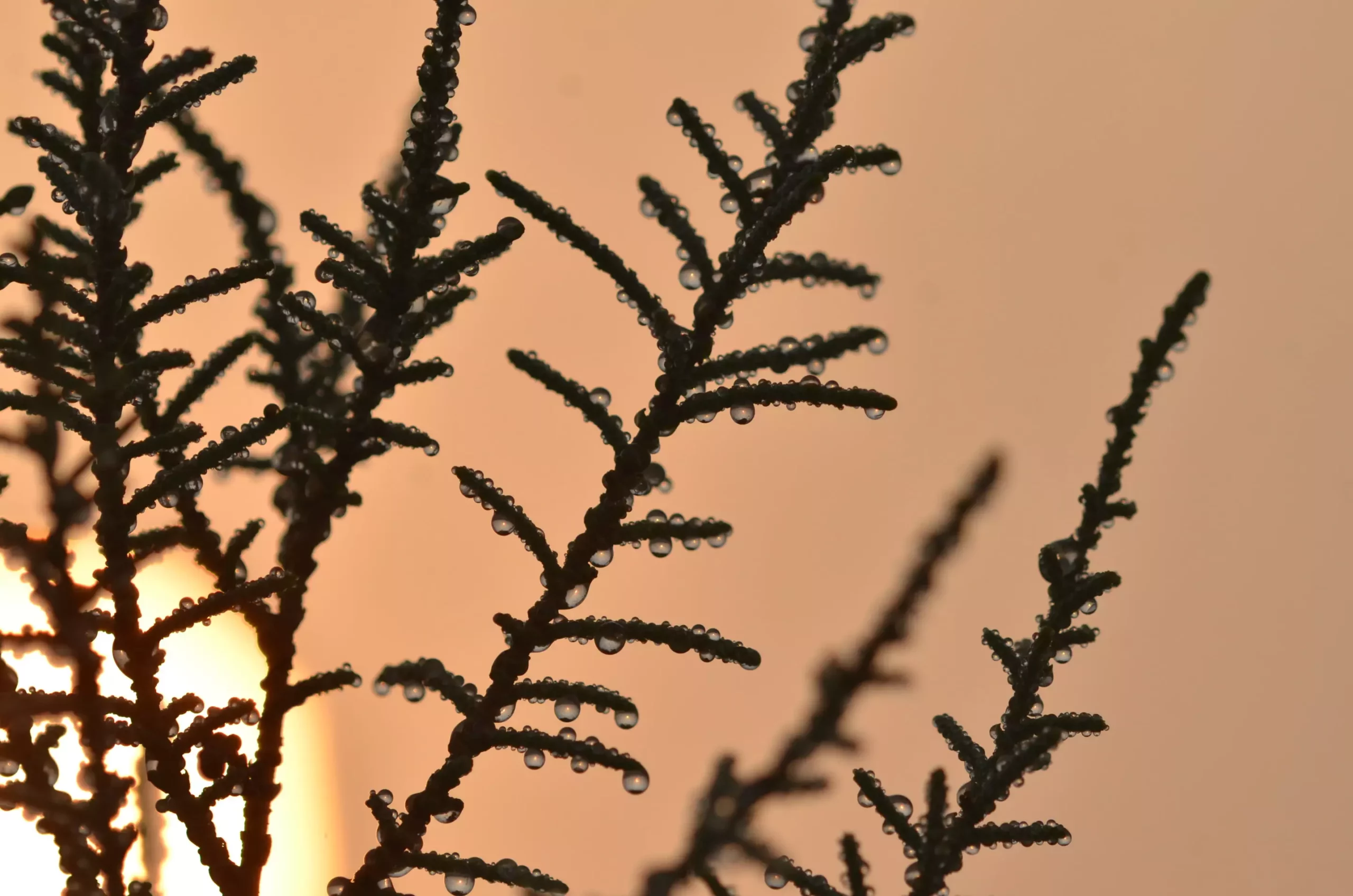

The arid regions of the world pose significant challenges when it comes to accessing fresh water. However, nature has provided us with remarkable examples of plants and animals that have adapted to these harsh conditions and developed efficient water-harvesting mechanisms. In a recent study conducted by a team of scientists from NYU Abu Dhabi, a unique mechanism used by a desert plant to extract moisture from the air has been identified. This discovery not only sheds light on the plant’s survival strategy but also holds promise for the development of new technologies to address water scarcity.
Tamarix aphylla, commonly known as athel tamarisk, is a shrub that thrives in hypersaline conditions. Native to the United Arab Emirates, this plant has evolved to make the most of the abundant humidity and fog occurrences in the region. The researchers found that Tamarix aphylla excretes salts onto the surface of its leaves, which then extract and condense water from the surrounding air. This unique mechanism serves as a source of inspiration for capturing atmospheric water resources and improving existing methods like cloud seeding.
The study, titled “Harvesting of Aerial Humidity with Natural Hygroscopic Salt Excretions,” published in the journal Proceedings of the National Academy of Sciences, delves into the physicochemical aspects of water collection by Tamarix aphylla. By absorbing saline water from the soil through its roots and expelling concentrated salt solution onto the leaves, the plant creates conditions for the formation of hygroscopic crystalline mixtures. These mixtures, composed of various minerals, have the ability to attract moisture from the air and condense it on the plant’s surface.
The researchers’ findings have far-reaching implications in the field of water-harvesting technologies. By understanding the natural complex mechanism employed by Tamarix aphylla, it is possible to design environmentally friendly formulations based on biogenic salt mixtures. These formulations can enhance the efficiency of harvesting aerial water or even revolutionize cloud seeding practices. Cloud seeding, when done effectively and responsibly, can contribute to the availability of fresh water resources, particularly in water-stressed regions.
The scarcity of freshwater resources worldwide necessitates a shift towards alternative water-harvesting technologies. The study conducted by the team of scientists from NYU Abu Dhabi highlights the incredible adaptations of desert plants like Tamarix aphylla to survive and thrive in arid conditions. By harnessing the principle of water collection from the air, researchers can develop innovative solutions that supplement conventional water resources. These bioinspired approaches hold significant potential for addressing water scarcity and promoting the responsible use of our planet’s limited water resources.
The remarkable mechanisms employed by desert plants to extract and condense moisture from the air offer insights into nature’s resilience and adaptability. The study conducted by the researchers at NYU Abu Dhabi provides a solid foundation for the development of technologies that can harness atmospheric water resources and improve existing methods such as cloud seeding. As we continue to face global water scarcity, it is essential to explore innovative and eco-friendly approaches to ensure the availability of fresh water for future generations.
In the realm of software development, the ability to swiftly and accurately address bugs is…
The realm of quantum computing and communication is not just an abstract dream anymore; it…
In a remarkable leap for the field of material science, a collaborative research initiative has…
Throughout Earth's vast history, our planet has endured five major mass extinction events that reshaped…
Rainfall is a vital element of our planet’s hydrological cycle, yet many aspects of its…
On a night when the universe aligns, a mesmerizing phenomenon awaits: the appearance of the…
This website uses cookies.